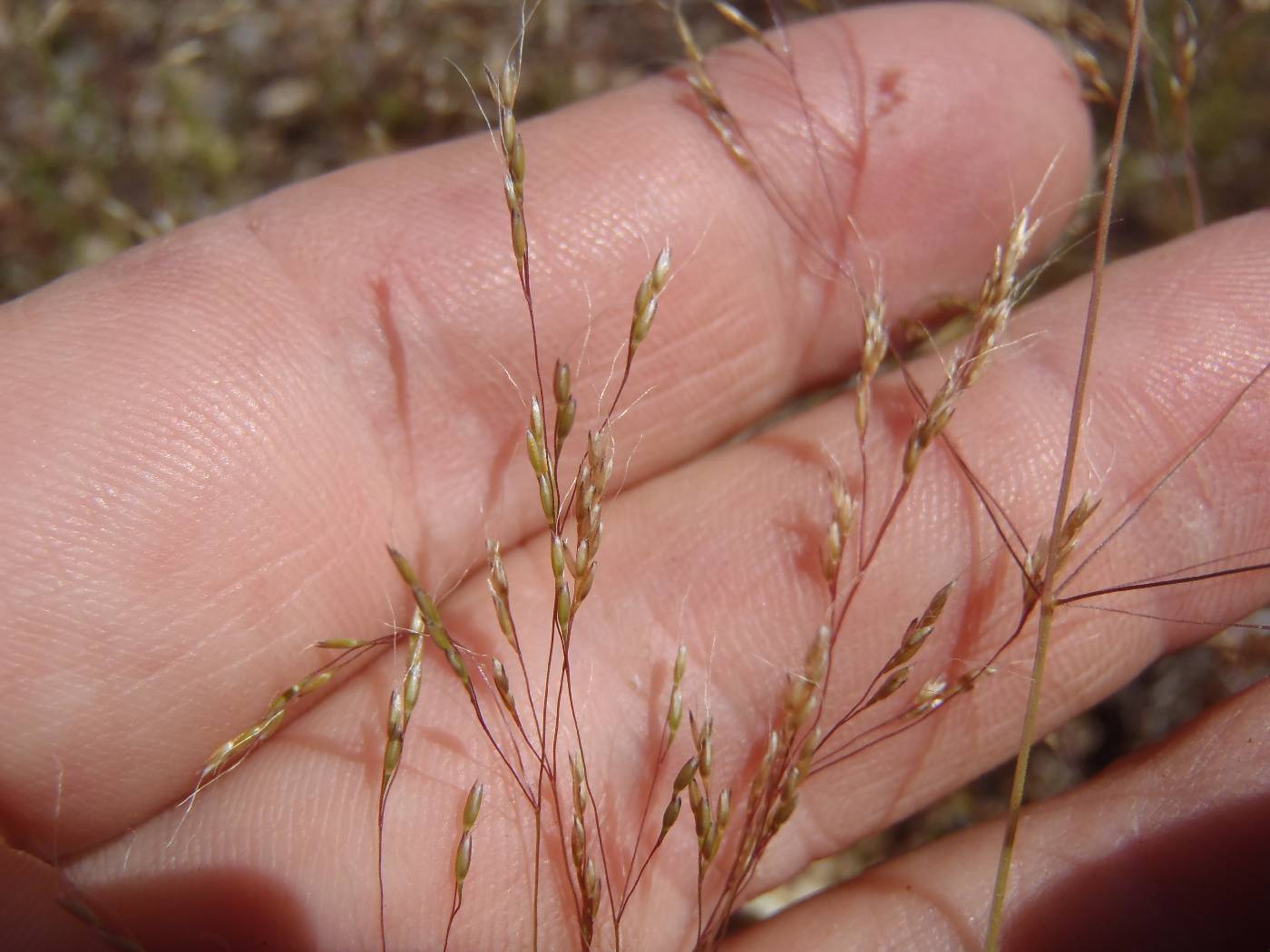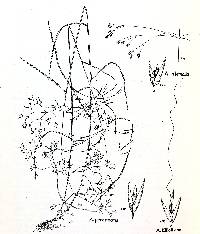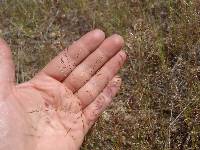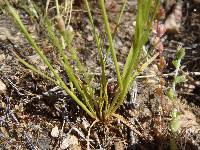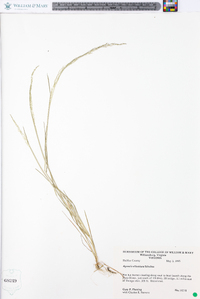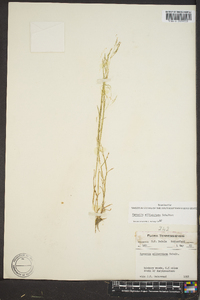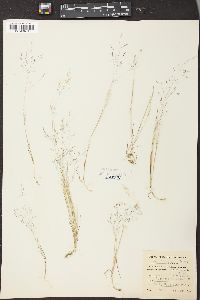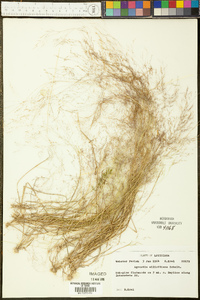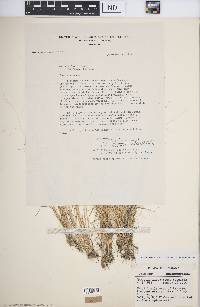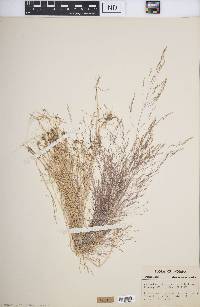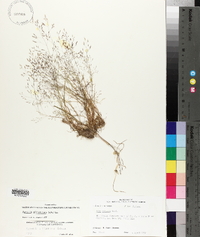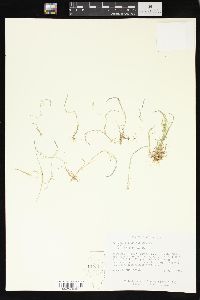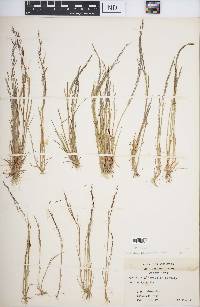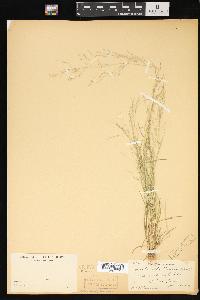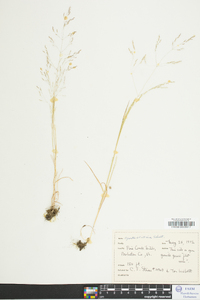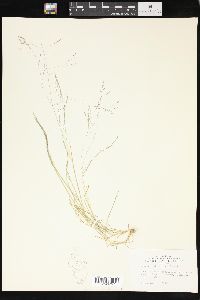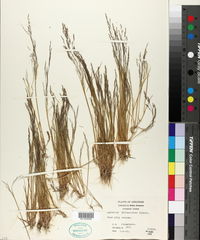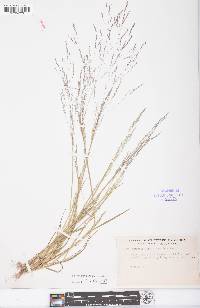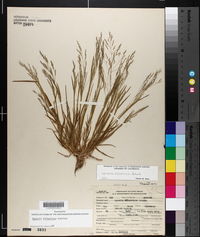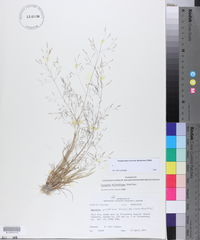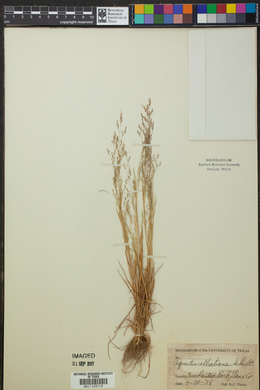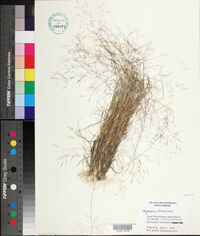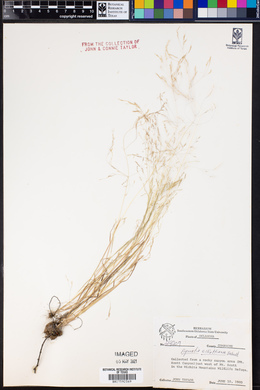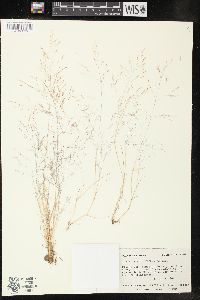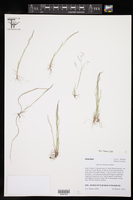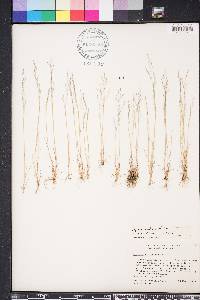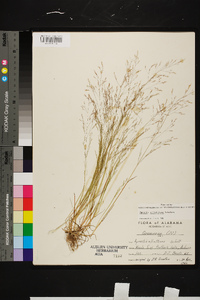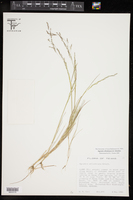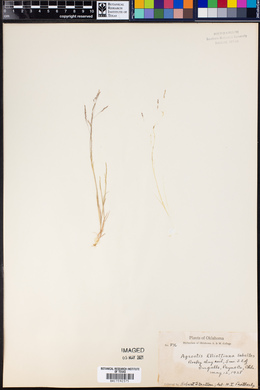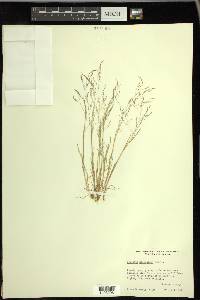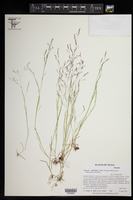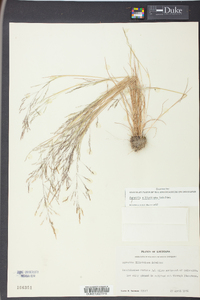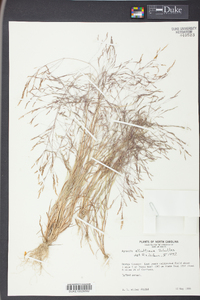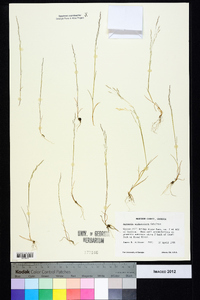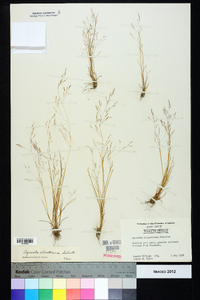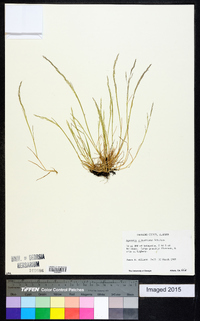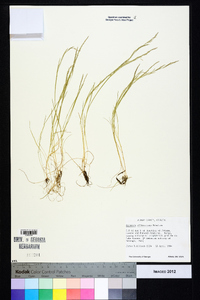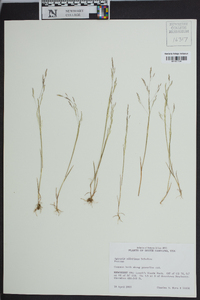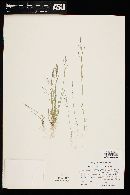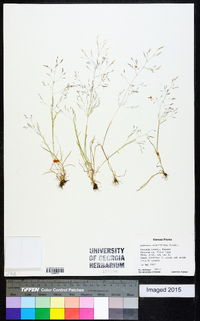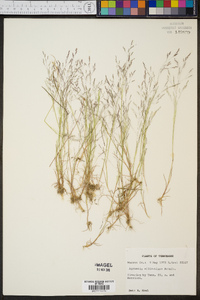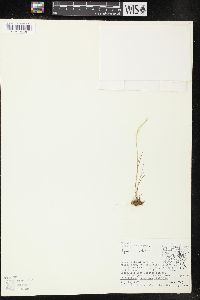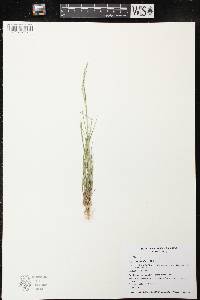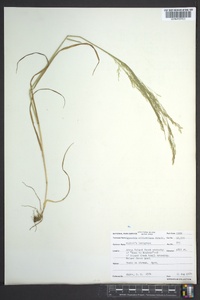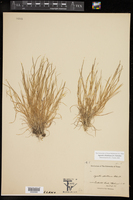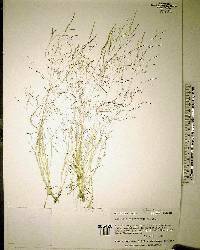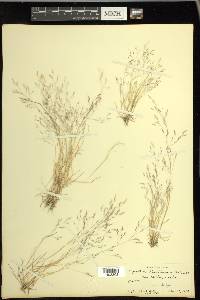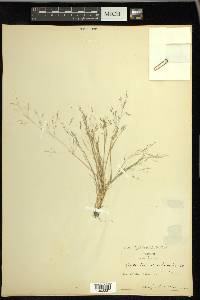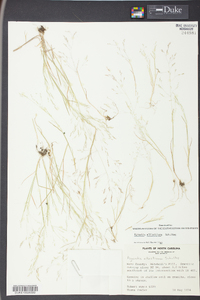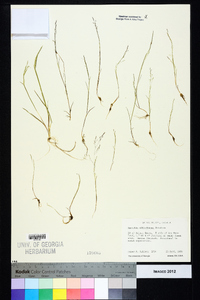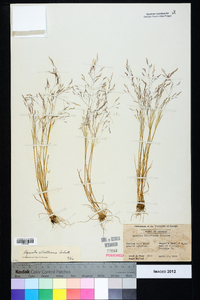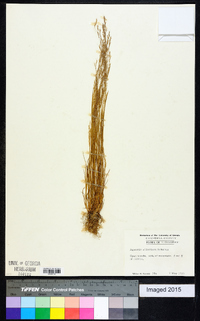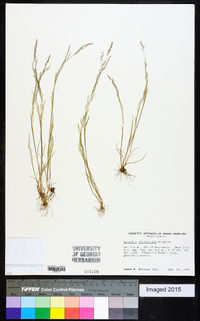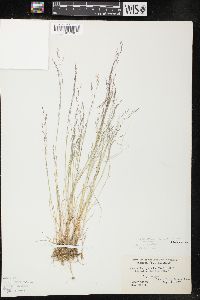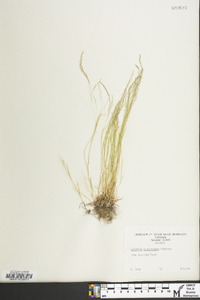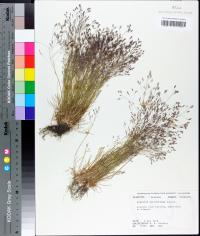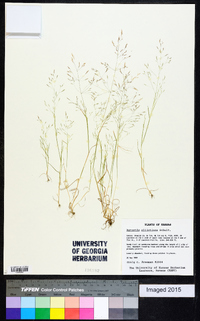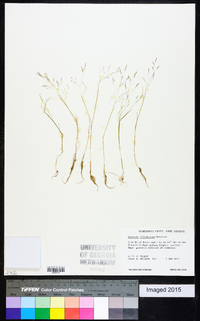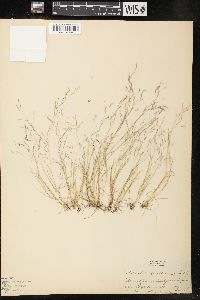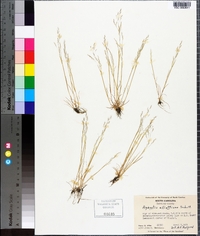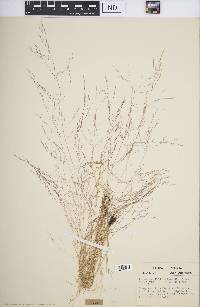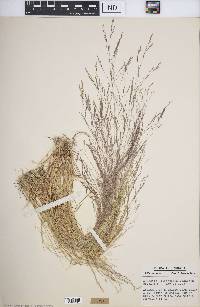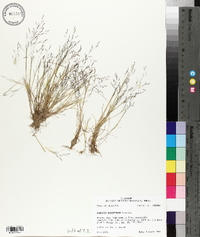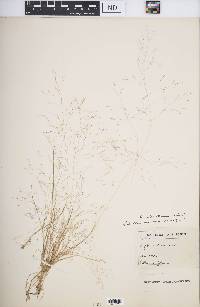
|
|
|
|
Family: Poaceae
Elliott's Bent, more...Elliott's bentgrass, Elliot bentgrass, elliott bentgrass
[Agrostis arachnoides, moreAgrostis elliottiana f. elliottiana Schult., Agrostis elliottiana f. molesta Shinners, Agrostis exigua Thurb.] |
Dr. David Bogler, USDA NRCS PLANTS Database Annuals, Terrestrial, not aquatic, Stems nodes swollen or brittle, Stems erect or ascending, Stems caespitose, tufted, or clustered, Stems terete, round in cross section, or polygonal, Stem internodes hollow, Stems with inflorescence less than 1 m tall, Stems, culms, or scapes exceeding basal leaves, Leaves mostly basal, below middle of stem, Leaves conspicuously 2-ranked, distichous, Leaves sheathing at base, Leaf sheath mostly open, or loose, Leaf sheath smooth, glabrous, Leaf sheath and blade differentiated, Leaf blades linear, Leaf blades 2-10 mm wide, Leaf blades mostly flat, Leaf blade margins folded, involute, or co nduplicate, Leaf blades mostly glabrous, Ligule present, Ligule an unfringed eciliate membrane, Inflorescence terminal, Inflorescence an open panicle, openly paniculate, branches spreading, Inflorescence solitary, with 1 spike, fascicle, glomerule, head, or cluster per stem or culm, Inflorescence branches more than 10 to numerous, Lower panicle branches whorled, Flowers bisexual, Spikelets laterally compressed, Spikelet less than 3 mm wide, Spikelets with 1 fertile floret, Spikelets solitary at rachis nodes, Spikelets all alike and fertille, Spikelets bisexual, Spikelets disarticulating above the glumes, glumes persistent, Spikelets disarticulating beneath or between the florets, Entire inflorescence falling intact, as a tumbleweed, Rachilla or pedicel glabrous, Glumes present, empty bracts, Glumes 2 clearly present, Glumes equal or subequal, Glumes equal to or longer than adjacent lemma, Glume equal to or longer than spikelet, Glumes 1 nerved, Lemmas thin, chartaceous, hyal ine, cartilaginous, or membranous, Lemma 3 nerved, Lemma glabrous, Lemma apex truncate, rounded, or obtuse, Lemma mucronate, very shortly beaked or awned, less than 1-2 mm, Lemma distinctly awned, more than 2-3 mm, Lemma with 1 awn, Lemma awn less than 1 cm long, Lemma awn subapical or dorsal, Lemma awn once geniculate, bent once, Lemma margins thin, lying flat, Lemma straight, Callus or base of lemma evidently hairy, Callus hairs shorter than lemma, Palea 2 nerved or 2 keeled, Stamens 3, Styles 2-fid, deeply 2-branched, Stigmas 2, Fruit - caryopsis, Caryopsis ellipsoid, longitudinally grooved, hilum long-linear.
FNA 2007 Common Name: Elliott's bentgrass Duration: Annual Nativity: Native Lifeform: Graminoid General: Small annual, with erect stems 5-45 cm tall, sometimes geniculate at base with 4-9 nodes, sheaths smooth or minutely roughened. Vegetative: Blades 0.5-4 cm long, 0.5-1 mm wide, flat, becoming involute; ligules 1.5-3.5 mm, dorsal surfaces scabrous, acute apices, rounded or truncate, lacerate. Inflorescence: Open and diffuse panicle 3-20 cm long, 2-12 cm wide, widely ovate, whole panicle detaches after maturity, sometimes enclosed my upper sheaths, lowest node with 1-6 branches; branches minutely roughened, capillary, branching beyond midlength, ascending then laxly spreading; spikelets clustered near tips, narrowly elliptic to lanceolate, yellowish purple to greenish purple; equal glumes 1.5-2.5 mm, 1-veined, scabrous on midvein, acute, scabrous margins above; lemmas 1-2 mm, smooth to scabrous to warty, translucent, awned from just below apices, awns 3-10 mm, flexuous, deciduous. Ecology: Found in disturbed sites, especially along roadways around 5,500 ft (1676); flowers April-July. Notes: Similar to A. scabra but differs in having a flexible awn. Noted for Saguaro NP but only collection made in Peloncillo Mountains of southwest New Mexico. This species needs collecting. Ethnobotany: Unknown Etymology: Agrostis is from the Latin and Greek names for a type of grass, from Greek agron or agros, field or pasture, while elliottiana is named for Stephen Elliott (1771-1830) an American botanist. Synonyms: Agrostis exigua Editor: SBuckley, 2010 Tufted annual 1-6 dm; lvs flat, 1-2 mm wide; infl diffuse, often half as long as the entire plant, the capillary branches eventually widely spreading and themselves branched near the middle; glumes lanceolate, becoming purple, subequal, 1.6-2 mm, nearly glabrous on the keel; lemma very thin, often minutely papillose-scabrous in age, 1.2-1.6 mm, sharply veined, the truncate tip bearing 2 minute setae; awn usually present, inserted just below the lemma-tip, pale, very delicate, flexuous, to 10 mm; callus short-bearded; palea obsolete; 2n=28. Open woods, barrens, fields, and roadsides; Md. to O., Mo., and Kans., s. to Fla. and Tex., and reported as intr. in Mass. and Me. Gleason, Henry A. & Cronquist, Arthur J. 1991. Manual of vascular plants of northeastern United States and adjacent Canada. lxxv + 910 pp. ©The New York Botanical Garden. All rights reserved. Used by permission. From Flora of Indiana (1940) by Charles C. Deam Frequent to common throughout the area shown on the map in hard, white clay soils with a pH value ranging from 6-6.6. The mass distribution occurs in moist fallow fields and pastures. It is also found on washed slopes and on crests of ridges in open woodland. The species is usually associated with Agrostis hyemalis from which it is easily separated by its scabrous feel, smaller size, and awned lemmas. ...... Indiana Coefficient of Conservatism: C = 2 Wetland Indicator Status: FACU Diagnostic Traits: Spikelets 1-flowered; glumes equal or longer than lemmas; lemmas awnless, 5-nerved.
|
This project was made possible in part by the Institute of Museum and Library Services [MG-70-19-0057-19].
Powered by Symbiota

